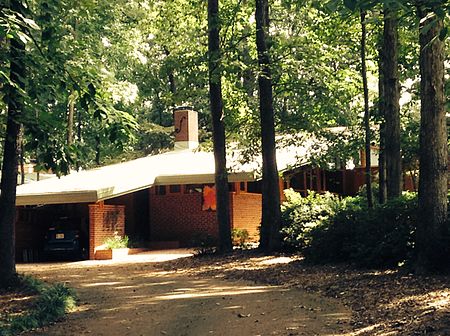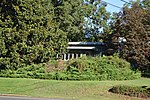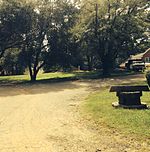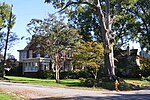Fadum House
Houses completed in 1949Houses in Raleigh, North CarolinaHouses on the National Register of Historic Places in North CarolinaModernist architecture in North CarolinaNational Register of Historic Places in Raleigh, North Carolina ... and 2 more
Raleigh, North Carolina Registered Historic Place stubsRaleigh, North Carolina building and structure stubs

Fadum House is a historic home which was designed by architect James W. Fitzgibbon and is located at Raleigh, Wake County, North Carolina. It was built in 1949, and is a two-story, Modern Movement-style dwelling. It is constructed of glass, brick and wood and features a double cantilevered roof on built-up wood columns.It was listed on the National Register of Historic Places in 1993.
Excerpt from the Wikipedia article Fadum House (License: CC BY-SA 3.0, Authors, Images).Fadum House
Glenwood Avenue, Raleigh
Geographical coordinates (GPS) Address Nearby Places Show on map
Geographical coordinates (GPS)
| Latitude | Longitude |
|---|---|
| N 35.821944444444 ° | E -78.664166666667 ° |
Address
Glenwood Avenue 2998
27608 Raleigh
North Carolina, United States
Open on Google Maps







